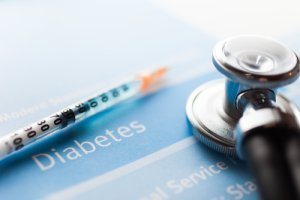Author:
Johan Bjorksten
 History:
History:
This theory was proposed in 1942.
Example:
Diabetes is often viewed as a form of accelerated aging. In fact, diabetics have 2–3 times the numbers of
Description of the Theory:
 According to this theory, the aging of living organisms depends on casual formation of chemical bonds, or «cross links», between protein molecules. Repair enzymes of the cell can not break those bonds.
According to this theory, the aging of living organisms depends on casual formation of chemical bonds, or «cross links», between protein molecules. Repair enzymes of the cell can not break those bonds.
Protein molecules are more particularly binds one to another by means of glucose molecule. The process of bonding of a protein molecule with a glucose molecule is known as glycation. Unfortunately, enzymes capable of splitting products of glycation are unknown so far. Nevertheless, the research group, led by J. Forbes, have been working at the development of medicines that provide the opportunity of detaching sugars from proteins. In the future, the use of such medicines will possibly allow proteins to restore its structure and return to normal, so negative effects of glycation will be annulled.
 The process of cross links formation between protein molecules in a human organism is very similar to the process that takes place during leather tanning. As we age, progressive accumulation of cross links occur in most tissues of our organism — in arteries, cartilages, muscles. The main consequence of this process is the decline in tissue elasticity. Actually, muscle and joint stiffness often observed in elderly people is the result of cross links formation between protein molecules.
The process of cross links formation between protein molecules in a human organism is very similar to the process that takes place during leather tanning. As we age, progressive accumulation of cross links occur in most tissues of our organism — in arteries, cartilages, muscles. The main consequence of this process is the decline in tissue elasticity. Actually, muscle and joint stiffness often observed in elderly people is the result of cross links formation between protein molecules.
Keeping on working on his theory, J. Bjorksten found that one more type of cross links exist. They are cross links between DNA molecules. J. Bjorksten thought that cross links between DNA molecules could not be broken by the repair system of the cell.

Those cross links hinder RNA synthesis on DNA that disturbs the process of protein formation in the cell. Moreover, cross links do not allow DNA to take part in cell divisions, so they prevent cell renewal.
Additions and Сriticism:
A lot of chemical agents can provoke
Publications:
- Susic, Dinko, et al. «Collagen
cross-link breakers: a beginning of a new era in the treatment of cardiovascular changes associated with aging, diabetes, and hypertension." Current DrugTargets-Cardiovascular & Hematological Disorders 4.1 (2004): 97–101. -
Aronson, Doron. «
Cross-linking of glycated collagen in the pathogenesis of arterial and myocardial stiffening of aging and diabetes." Journal of hypertension 21.1 (2003): 3–12. -
Nagy, Imre Zs, and Katalin Nagy. «On the role of
cross-linking of cellular proteins in aging." Mechanisms of ageing and development 14.1 (1980): 245–251. -
Fujimoto, Daisaburo. «Aging and
cross-linking in human aorta." Biochemical and biophysical research communications 109.4 (1982): 1264–1269. -
Cannon, D. J., and
P. F. Davison . «Cross-linking and aging in rat tendon collagen." Experimental gerontology 8.1 (1973): 51–62. -
Yamauchi, Mitsuo, David T. Woodley, and Gerald L. Mechanic. «Aging and
cross-linking of skin collagen." Biochemical and biophysical research communications 152.2 (1988): 898–903.